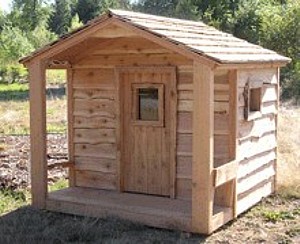As you’re spending more time indoors, keeping your house clean might start to become more of a priority. You know the feeling: You walk into your kitchen to make dinner, light a candle, turn on some soft evening music, and muse over the joys of life. Don’t you? For busy moms and families, deep cleaning doesn’t always get done as often as they’d like.
Because of this, many spots in the house are often overlooked. When it’s time to treat
ourself to an evening in, let’s help you make sure your home is spotless. Here are ten commonly missed areas:
Because of this, many spots in the house are often overlooked. When it’s time to treat
ourself to an evening in, let’s help you make sure your home is spotless. Here are ten commonly missed areas:

The Vacuum
The vacuum is often overlooked because it is a cleaning tool. But with all the dust it sucks up, it’s easy for germs to collect and find a home here. Once in a while, give your vacuum a good disinfecting!
The Trash Can
No one wants to pay too much attention to the trash cans. Garbage is thrown away and forgotten about. But all that garbage attracts a host of bacteria, germs, and more. Especially for garbages in the kitchen where you eat and drink, when you take out the trash, remember to wipe down and disinfect the garbage can, too! It will also help eliminate some of the nasty odors that linger.
The Computer & Phones
Computers and phones come in contact with our skin on a daily basis. And yet we seldom think of keeping them clean. Whether cell phone or landline, desktop or laptop, you can keep these clean without wetting them down or damaging them. Use a disinfectant wipe that is moist but not wet, and lightly wipe them down, concentrating on the keys, and any area that touches your face. This will help prevent those nasty germs that collect from spreading between persons.
The Refrigerator
The refrigerator holds your food, and because of this deserves a lot of attention! We tend to perceive it as clean because the cold inside helps prevent the growth of germs and bacteria. However it still needs to be cleaned, both inside and out. Concentrate on the handles where you open and close, and look for discoloration both on the exterior and interior. Make sure you throw out old or moldy food, and if you find any, give the inside a good disinfecting.
Doorknobs and Handles
The doorknobs and various handles throughout your home, from drawers to cabinets, are touched regularly and by any number of people. Don’t forget to keep them clean! This is good for your health, and the overall sanitation of your home.
Air Vents
Air vents are general unseen. And as the saying goes: “Out of sight, out of mind.” Remember to clean them once in a while. Any germs that linger can be carried throughout your home as air travels through them.
Window Treatments
Whether you have curtains or blinds, dust is sure to settle in. If you have blinds, wipe them down regularly! Curtains can be washed once in a while as well. These are both often forgotten because we see them as stagnate decor, and many people don’t handle them regularly.
Toothbrush Holders & Soap Dispensers
Soap helps keep your hands clean, but what about keeping the soap dispenser clean? Don’t be fooled: Bacteria can grow in and around the soap dispenser. And the toothbrush holder by your sink? Keeping this clean will help prevent you from allowing excess germs in your mouth. Don’t allow them to buildup near objects you use for personal hygiene!
Pet Supplies
Your pets have toys, beds, dishes, and more! Remember to keep them clean. Your animals may share your bed, your couch, cuddle up to you, and more! We love them. Make sure that their supplies are clean so that they don’t carry all those germs with them.
Dish Towels & Sponges
Like vacuums, we use our dish supplies to clean, and forget about keeping them clean! Towels should be washed regularly like laundry, sponges replaced regularly, and scrubbers run through the dishwasher weekly. Doing this will keep your dishes clean when you wash them, and prevent the excess growth of bacteria in your sink.
A clean home is not only good for your health and hygiene, it helps keep your house looking better, smelling better, and overall more welcoming. When you are ready for a night in, afford yourself some added peace of mind by knowing that you’ve conquered those commonly-missed places, and your home is sanitary and clean. Remember, you and your home are worth it! To see trusted contractors who can help with your home’s upkeep, visit http://responsiblecontractors.com/!





